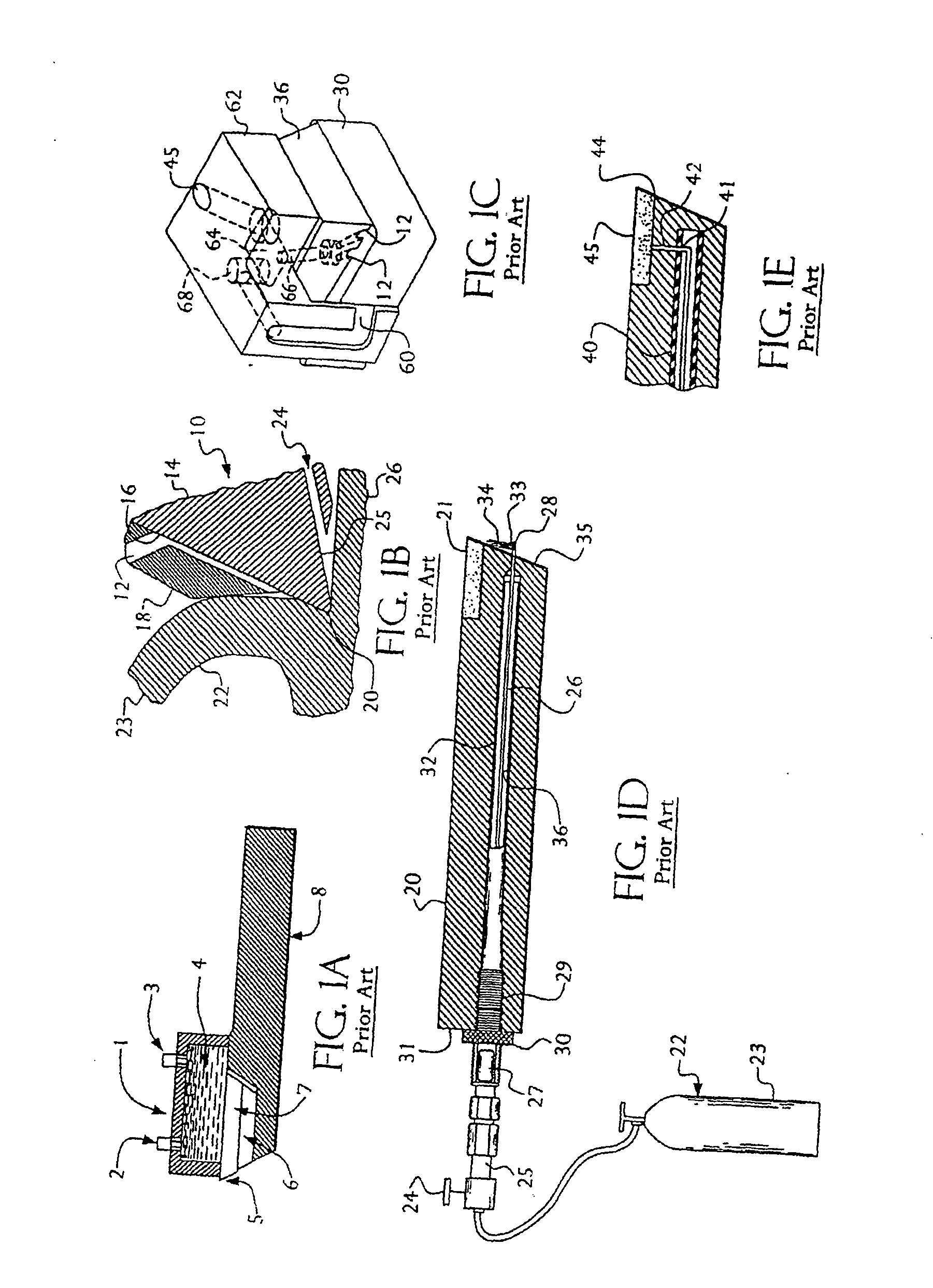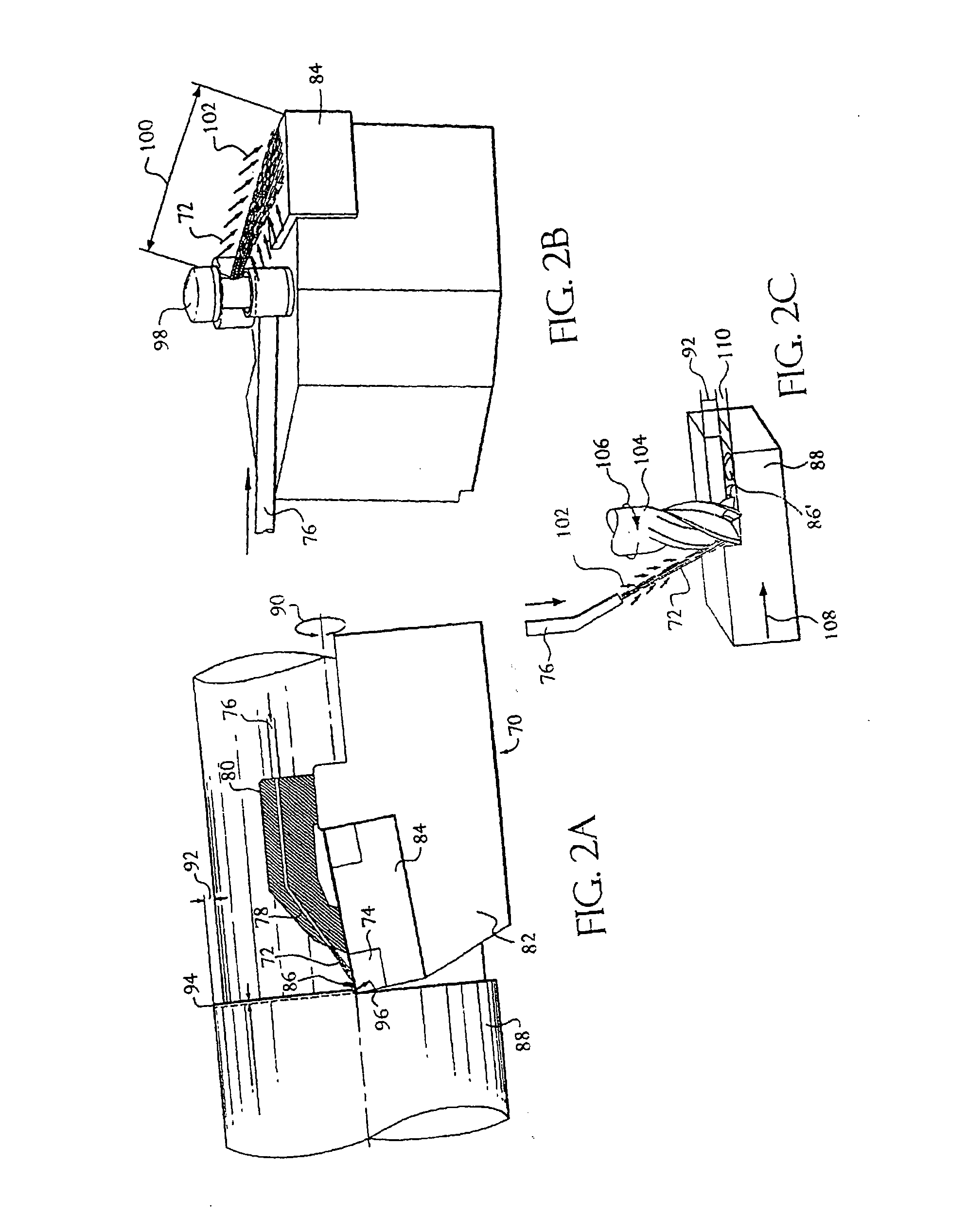Apparatus and method of cryogenic cooling for high-energy cutting operations
a cutting operation and cryogenic cooling technology, applied in the direction of domestic cooling apparatus, cooling container discharge methods, lighting and heating apparatus, etc., can solve the problems of high energy dissipation at the cutting tool, high energy dissipation of cutting tools, and difficulty in high-speed machining
- Summary
- Abstract
- Description
- Claims
- Application Information
AI Technical Summary
Benefits of technology
Problems solved by technology
Method used
Image
Examples
examples
[0090]FIG. 4 shows an evolution of insert temperature and flank wear during a high-energy finish-turning test cutting Ti-6Al-4V with a hard grade of WC-Co insert. The depth of cut was 0.030 inches at a cutting speed of 750 ft. / min. and a feed rate of 0.008 in. / rev. using the same type of insert as that used in FIG. 4A. The life of a tool cooled with a cryogenic nitrogen jet applied according to the invention was more than four (4) times longer than the life of a tool cooled using a conventional (emulsified) flood coolant.
[0091]FIG. 5A shows the life of a ceramic composite tool (Al2O3—SiCw) in a high-energy cutting operation on A2-steel at a speed of 300 ft / minute, a depth of cut of 0.020 inches, a feedrate of 0.005 inches / rev., and a removal rate of 0.36 in.3 / min. The tool life was evaluated using three criteria: the maximum flank wear, Vb max=0.6 mm; the maximum flank (or DOC notch) wear, Vb max=0.7 mm; and the dimensional cutting error producing parts 0.004 inches (0.1 mm) larger...
PUM
| Property | Measurement | Unit |
|---|---|---|
| Temperature | aaaaa | aaaaa |
| Temperature | aaaaa | aaaaa |
| Temperature | aaaaa | aaaaa |
Abstract
Description
Claims
Application Information
 Login to View More
Login to View More - R&D
- Intellectual Property
- Life Sciences
- Materials
- Tech Scout
- Unparalleled Data Quality
- Higher Quality Content
- 60% Fewer Hallucinations
Browse by: Latest US Patents, China's latest patents, Technical Efficacy Thesaurus, Application Domain, Technology Topic, Popular Technical Reports.
© 2025 PatSnap. All rights reserved.Legal|Privacy policy|Modern Slavery Act Transparency Statement|Sitemap|About US| Contact US: help@patsnap.com



